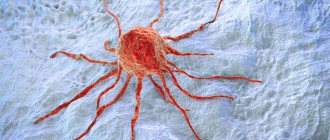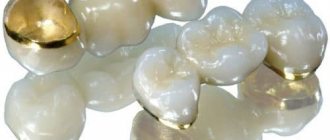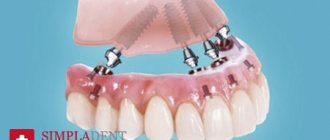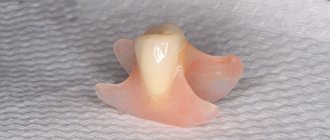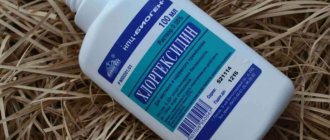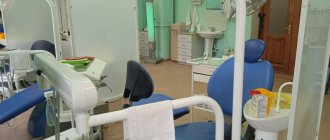- In what cases do doctors recommend rinsing your nose?
- Washing methods
- Nasal rinsing at home
- Nasal shower
- Irrigation
The procedure of rinsing the nasal cavity is one of the most effective methods of treating a runny nose. It allows you to eliminate accumulated mucus, remove swelling, remove pathogenic microorganisms and eliminate inflammation. It is recommended to carry out rinsing in autumn and winter, and in some cases, to include them in the mandatory list of daily hygiene procedures.
In what cases do doctors recommend rinsing your nose?
- Rhinitis. A runny nose can be the result of an infection or a reaction to an allergen. Rinsing the nose in such cases eliminates particles that irritate the mucous membrane and removes accumulated mucus, significantly alleviating the patient’s condition.
- Sinusitis. This is an inflammation of the sinuses, in which it is quite difficult to deliver medicine to the inflamed area. A common form of this disease is sinusitis. In accordance with your doctor's recommendations, you can carry out rinsing procedures at home, but for sinusitis it is better to perform them in the hospital.
- After surgery. Rinsing is necessary for careful restoration of the mucous membrane.
Washing methods
The procedure can be carried out in several ways:
- Nasal irrigation. This method of washing is the most gentle. A solution, usually sea salt based, is sprayed into the nostril. It is carried out using pharmaceutical products.
- Using pear. The most common method of rinsing can be done at home. It is extremely important to follow the rules, otherwise the infection may spread to the ear.
- Nasal douche. It is carried out in a hospital setting using special equipment. This is done using a weak saline solution.
- "Cuckoo". The procedure should only be carried out under the supervision of a specialist in a hospital or clinic. The patient should be in a supine position. To increase the pressure, the patient is asked to say “ku-ku”.
- Aspiration. Suitable for newborns and infants. The product is instilled into the child’s nose and, using an aspirator, is pumped out along with the mucus.
A hoarse voice is one of the signs of laryngitis in a child
14.09.2021
Laryngitis in a child is a common viral infection that tends to recur. This mainly applies to young children,
because a child's larynx is more susceptible to infection and swells more easily than an adult's larynx due to its location and anatomical
buildings. This is usually a minor illness, but in some cases severe acute laryngitis may develop, which may
be life-threatening. Learn about the symptoms of laryngitis in children and how it is treated.
Laryngitis in a child - causes
The disease is caused by viruses, most often: parainfluenza virus, influenza A or B virus, adenovirus, RS virus, metapneumovirus.
There are also cases of bacterial infections, for example, during complications after an untreated cold. As a consequence, there is
damage to the mucous membrane, swelling around the larynx and narrowing of the airway. The disease usually develops in the 1st and 4th quarters
year is a period of increased viral activity, worsening weather conditions and intense heating of apartments. Warm and dry air
promotes the development of infections.
Laryngitis is usually mild and associated with high fever, infection and breathing problems, but is not life-threatening.
The most common type is subglottic laryngitis. It should not be confused with acute diphtheria laryngitis caused by the diphtheria bacillus.
However, life-threatening conditions may include: acute laryngitis and epiglottitis, which are manifested by a large tumor that interferes with breathing.
Why is this happening? Sensitive larynx in a child
Laryngitis and severe complications occur in young children because their airways are slightly different from those of adults.
The submucosa of the larynx in children is looser and contains many blood and lymphatic vessels , which makes it more prone to edema ;
the socket of the larynx is located much higher, the larynx is smaller, the epiglottis is flaccid, and the immune system is not yet formed. All this is done by the larynx in children
vulnerable to infections.
Laryngitis in a child - symptoms
Subglottic laryngitis in children occurs between 5 and 6 months of age, with the greatest incidence in the second year of life. Boys are more likely to get it
type of infection than girls, and affects about 6-8% of children under 5 years of age each year.
Symptoms of laryngitis in children appear suddenly and are preceded by several days of respiratory infections. Most often occurs at night or in the morning, and
symptoms may vary in severity, from mild inflammation, including an intermittent barking cough and hoarseness, to severe inflammation,
requiring emergency assistance.
Symptoms:
• The so-called stridor is a high-pitched sound when breathing due to a narrowing of the airway. • Characteristic barking cough. • Hoarseness. • Rude voice, even silence. • Mild to moderate shortness of breath. • Possible slight fever.
Acute symptoms of subglottic laryngitis:
• Severe shortness of breath, accompanied by increased work of the pectoral muscles. • Blue skin color. • Anxiety. • Impaired consciousness. • Breathing problems.
Narrowing of the airway in the subglottic region can quickly increase and cause severe shortness of breath, so should not be underestimated
infection, but appropriate treatment must be provided as soon as possible. The disease varies in intensity, and the symptoms of laryngitis
in children, initially harmless, can quickly worsen and cause respiratory failure.
Laryngitis in a child - treatment at home
Although the symptoms of laryngitis in children can be worrying, most cases are mild and can be treated well with
using home remedies. What will be effective for childhood laryngitis? Care should be taken to create an atmosphere of calm, because nervousness and
tension will increase the child's fear, which - based on the vicious circle effect - will increase shortness of breath and respiratory failure. To prevent
increased shortness of breath, it is useful to inhale cold, moist air, which reduces swelling of the larynx. It is recommended to open the window wide or remove
take the child to the terrace/balcony and let him breathe in the fresh, cool air. You should remember to dress your baby correctly so as not to catch a cold.
Another way to treat mild laryngitis in a child is to inhale saline and drink drinks. After the attack
shortness of breath stops, you should contact your pediatrician for effective treatment for laryngitis. The doctor knows best what to use to treat the larynx
child and what treatment will be most effective in each case. He will likely prescribe corticosteroids or other medications
to reduce swelling of the larynx.
Published in Pediatrics Premium Clinic
Nasal rinsing at home
At home, it is recommended to use a nasal shower and irrigation.
Nasal shower
You can rinse at home using a nasal bulb. First of all, a product is selected - saline solution or a preparation based on sea water.
You need to lean forward about 45 degrees and turn your head to the side. and Pour the contents slowly into the nostril that faces upward. If the patency of the canals is normal, then the solution flows out through the other nostril. If part of the solution has penetrated into the oral cavity, this is not a deviation.
The procedure must be repeated for the second nostril.
Note!
When washing, do not blow your nose too much. Fluid and pathogenic bacteria can enter the middle ear and cause inflammation.
Rules for performing the procedure:
- permissible liquid temperature – 36-37 C;
- for diseases of the nose, the procedure is carried out three times a day, for prevention once a day;
- After washing, you should refrain from going outside.
Contraindicated for:
- severe nasal congestion;
- polyps and other formations;
- deviated septum;
- complications of colds, in particular otitis media;
- regular nosebleeds.
Irrigation
Performed using pharmaceutical drugs. After irrigation, the medicine flows out under gravity. This method is the most gentle, but is not used for purulent discharge and severe congestion.
The patient should take a forward bending position. This is not always convenient for older people. To administer the drug, you must place the cap on the nostril and press on the bottle. The solution should flow out of the other nostril.
Results and discussion
Before the start of the study, 45 (78.3%) children complained of poor health and malaise. In 24 (40.0%) children, rhinitis was complicated by symptoms of catarrhal sinusitis: difficulty nasal breathing, heaviness and pain in the head, in the projections of the sinuses. During rhinoscopy, 17 (28%) children had mucopurulent discharge from the nose in the middle and lower nasal passages, 43 (72.0%) had mucous discharge, 29 (48.0%) patients had hyperemia and swelling of the nasal mucosa . During pharyngoscopy, redness of the pharyngeal mucosa and mucus flowing down the back wall of the pharynx were observed in 48.1% of cases. In children, along with a runny nose, there were signs of acute pharyngitis and laryngotracheitis (24.0%), which was accompanied by a sore throat and dry cough; in 55% of cases the cough was paroxysmal in nature. In 40% of cases, complaints were made of chest pain when coughing. In 26.7% of children with symptoms of tracheitis, the cough was accompanied by the separation of viscous mucous sputum.
The presence of acute inflammatory process activity in 41.7% of children with acute respiratory diseases was evidenced by leukocytosis up to 11.08±1.4·109/l in 62.5% of them and an increase in ESR on average to 16.2±1.45 mm/h in 79.2%.
When using inhaled miramistin solution in children with symptoms of nasopharyngitis, the cough became milder, less frequent after the 2nd day of treatment, in 75% of patients it completely disappeared by the end of the course; sputum discharge improved, nasal congestion decreased, and the amount of discharge from the nasal passages decreased.
In 40% of children with symptoms of laryngotracheitis, cough complaints decreased significantly after the 4th day of inhalation. Against the background of a decrease in the number of coughing episodes in children in the main group, a change in the nature of sputum was recorded - the viscosity decreased, and the discharge acquired a mucous character. The cough became moist, more productive, its intensity decreased, which was accompanied by a significant decrease in sore throat and pain in the chest during coughing attacks. In 25% of children, the cough stopped completely after the 5th day of treatment, in half (45%) of the children - after the 7th day, in the remaining patients - after the 10th day of inhalation.
In the control group, the positive dynamics of clinical symptoms were less pronounced and occurred 3-4 days later ( Fig. 1
).
Under the influence of inhalation of Miramistin solution, favorable dynamics of the auscultatory picture were observed in the form of a decrease or disappearance of wheezing in the lungs after the 6th day of treatment in 65% of children with laryngotracheitis, in the remaining children - after the 8th day of inhalation. In the control group, the disappearance of wheezing was observed at a later date: in only 20% of children, wheezing disappeared by the end of the treatment course.
To assess the dynamics of subjective complaints, SAS was used. SAS data showed that by the end of the course of treatment, children of all groups had improved well-being and motor activity.
In children with symptoms of nasopharyngitis, nasal congestion, according to the SAS, decreased from 8.49±0.137 to 2.00±0 points, discharge from the nasal passages - from 9.25±0.155 to 2.00±0.10 points ( Fig. 2
).
In the control group, the dynamics of the severity of nasal congestion and nasal discharge decreased from 7.99±0.207 to 4.00±0.100 points and from 8.89±0.266 to 4.92±0.140 points, respectively ( Fig. 3
).
According to SAS data, after the first inhalation of miramistin solution in children with symptoms of laryngotracheitis, the intensity of cough decreased (from 9.30±0.179 to 7.70±0.193 points), weakness significantly decreased and performance increased. A significant decrease in subjective symptoms in children with symptoms of laryngotracheitis in the main group was noted after the 4th day of inhalation. In 2 children who received treatment for 10 days, by the end of treatment the severity of subjective symptoms decreased to 1 point ( Fig. 4
).
In the control group, the severity of subjective symptoms decreased gradually and by the end of the observation remained at an average level of 5.7 points.
Based on the studies conducted, a positive effect of inhalation of miramistin solution on peripheral blood parameters in children with acute respiratory infections who had initially reduced hemogram values was established, characterized by normalization of the leukocyte count and ESR in all children, which indicates an anti-inflammatory effect.
Analysis of the flow-volume curve data showed that at the beginning of the study, 70% of patients with complicated tracheitis had an average decrease in respiratory function below the age norm (POS - 69.24±0.23% D, FEV1 - 75.45± 0.67%D).
Under the influence of inhalation of miramistin solution, a tendency towards an increase in reduced indicators was noted (POS up to 73.02±0.34%D and FEV1 up to 82.36±0.41%D), but no significant dynamics were identified.
In children of the control group who received miramistin in the form of a spray, indicators of external respiration function remained at the same level.
During the study, daily monitoring of peak expiratory flow (PEF) was carried out in children with symptoms of tracheitis, which made it possible to monitor the state of external respiration and evaluate the effectiveness of the therapy. The initial PEF values in 25% of these children were below the age norm. In the course of the study, under the influence of inhalation of miramistin solution, a tendency was noted to increase the average PEF values after the 5th inhalation in almost half (45%) of children (from 66.79±0.76 to 74.22±0.62%D) , by the end of the course there was a significant increase in indicators to 78.35±0.89%D ( p
<0.05).
In children who received miramistin in the form of a spray, similar dynamics of PEF indicators were not recorded, which indicated a more pronounced positive effect of inhalations ( Fig. 5
).
Analysis of the initial level of physical fitness of school-age children with acute respiratory infections revealed a decrease in the degree of development of speed-strength capabilities in 70% of children, and a decrease in the level of development of strength capabilities in 80%.
Data from a repeated study of the functional state of the muscular system in all children after recovery indicated positive dynamics in speed-strength indicators of physical fitness (standing long jump, dynamometry).
A comprehensive assessment of the effectiveness showed a significantly higher therapeutic effectiveness of inhalation of Miramistin solution (87.5%) than when using Miramistin in the form of a spray (75.0%, p
<0.05), due to an increase in the pharmacotherapeutic activity of the drug due to an increase in the total volume of the drug suspension and the contact surface of the aerosol obtained using a nebulizer.
How to rinse a child's nose?
Otolaryngologists are unanimous in the effectiveness of irrigation procedures for young children. Aspirations can be performed on children from birth. The nasal canals in children are narrow and short, which explains their obstruction during colds and allergies. As a result of nasal congestion, infants have difficulty sleeping and eating, and their weight decreases. To rinse the nose of young children, it is better to use professional products and aspirators instead of pears.
Nasal shower and irrigation can be used from 4 years of age. When choosing pharmaceutical rinsing products, you should be guided by the age restrictions specified by the manufacturer.
Miramistin solution spray 0.01% 50ml (Infamed)
The drug is ready for use.
Instructions for using the packaging with spray nozzle:
- Remove the cap from the bottle and also remove the urological applicator from the 50 ml bottle.
- Remove the supplied spray nozzle from its protective packaging.
- Attach the spray nozzle to the bottle.
- Activate the spray nozzle by pressing again.
Directions for using the 50 ml or 100 ml pack with gynecological attachment:
- Remove the cap from the bottle.
- Remove the supplied gynecological attachment from the protective packaging.
- Attach the gynecological nozzle to the bottle without removing the urological applicator.
Directions for using 100 ml, 150 ml, 200 ml packaging with measuring cup:
To use the drug as a rinse, the amount of drug required for one rinse should be measured using the measuring cup included in the kit.
Otorhinolaryngology
Adults and children
For sinusitis: during puncture, the maxillary sinus is washed with a sufficient amount of Miramistin®.
For acute and chronic external otitis: up to 5 drops of the drug are instilled into the external auditory canal using a pipette 4 times a day or, instead of instillation, a gauze turunda soaked in the drug is carefully inserted into the external auditory canal 4 times a day. The course of treatment is 10 days.
Tonsillitis, pharyngitis, laryngitis:
Children 3-6 years old: by pressing the head of the spray nozzle once or 3-5 ml per rinse, 3-4 times a day;
Children 7-14 years old: press the head of the spray nozzle twice or 5-7 ml per rinse, 3-4 times a day;
Children over 14 years of age and adults: press the head of the spray nozzle 3-4 times or 10-15 ml per rinse, 3-4 times a day.
The duration of therapy ranges from 4 to 10 days, depending on the timing of remission.
Dentistry
Adults and children
For stomatitis, gingivitis, periodontitis, it is recommended to rinse the mouth with 10-15 ml of the drug, 3-4 times a day. If rinsing is impossible, local use of gauze or cotton swabs moistened with a solution of Miramistin® is allowed.
Surgery, traumatology, combustiology
Adults and children
In order to treat and prevent secondary infection of wounds, the surface of the wound is irrigated with a solution of Miramistin®. Gauze swabs moistened with a solution of Miramistin® are fixed on the surface of the wound. If necessary, it is possible to pack the wound and/or fistula tracts during surgical procedures. Active drainage of wounds and/or cavities is possible. The daily consumption of Miramistin® is up to 1 liter of the drug.
Obstetrics, gynecology
Adults
Prevention and treatment of suppuration of postpartum injuries, wounds of the perineum and vagina, postpartum infections: the drug Miramistin® is used in the form of vaginal irrigation before childbirth (5-7 days), during childbirth (after each vaginal examination). In the postpartum period, Miramistin® is administered using tampons soaked in 50 ml of the drug, with further exposure of the tampon for 2 hours for 5 days.
When women give birth by cesarean section, the vagina is treated immediately before the operation, the uterine cavity and the incision on it are treated during the operation, and in the postoperative period, tampons moistened with Miramistin® are inserted into the vagina with an exposure of 2 hours for 7 days. Treatment of inflammatory diseases is carried out over a course of 2 weeks by intravaginal administration of tampons with the drug Miramistin®, as well as by the method of medicinal electrophoresis.
Complex treatment of inflammatory diseases in gynecology (vulvovaginitis): in the form of vaginal irrigation or insertion of a tampon moistened with Miramistin®, with an exposure of 2 hours, for 7-14 days (the duration of treatment and the frequency of administration are determined as prescribed by the doctor). For the convenience of vaginal irrigation, the use of a gynecological nozzle is recommended. Insert the contents of the bottle into the vagina using a gynecological nozzle and perform irrigation.
Children
The method of application, duration of treatment and frequency of administration are determined as prescribed by the doctor.
Dermatology
Adults and children
Treatment and prevention of pyoderma and dermatomycosis, candidiasis of the skin and mucous membranes, mycoses of the feet: the drug Miramistin® is applied to the affected area of the skin by wiping with sterile gauze swabs, generously moistened with the drug. Miramistin® is used 3 times a day on the affected areas of the skin.
Venereology
Adults
Prevention of sexually transmitted diseases: the use of Miramistin® is effective within 2 hours after sexual intercourse. Using a urological applicator, insert the contents of the bottle into the urethra for 2-3 minutes:
Men: 2-3 ml of the drug;
Women: insert 1-2 ml of the drug into the urethra and 5-10 ml into the vagina (for convenience, the use of a gynecological attachment is recommended).
Treat the skin of the inner thighs, pubis, and genitals.
After the procedure, it is recommended not to urinate for 2 hours.
Urology
Adults
In the complex treatment of urethritis and urethroprostatitis, 2-3 ml of the drug Miramistin® is injected into the urethra 1-2 times a day, the course is 10 days.
Children
The method of application, duration of treatment and frequency of administration are determined as prescribed by the doctor.
If there is no improvement after treatment, or symptoms worsen, or new symptoms appear, you should consult your doctor. Use the drug only according to the method of use and in the doses indicated in the instructions.
Pharmaceutical nasal rinses
The most popular products are saline solution or sea water-based products.
Preparations with sea water, which are sold in pharmacies, contain components such as selenium, potassium, iodine, magnesium and other trace elements. In addition to washing, they have a therapeutic effect on the mucous membrane:
- eliminate inflammation;
- thins and removes mucus;
- remove swelling;
- moisturize the mucous membrane;
- increase local immunity.
They are used for therapeutic and prophylactic purposes, to maintain optimal functioning of the respiratory system. The safe composition allows the use of such products for rinsing the nose in children and pregnant women. For example, a solution of sea water Sialor aqua (release form - drops) can even be used for infants.
In addition, it has a complex effect on the mucous membrane: moisturizes, reduces inflammation and promotes mucosal regeneration.
Drops and sprays with sea water relieve the condition of a runny nose and allergies, washing away the irritant from the nasal cavity.
Additionally, pharmaceutical products with sea water may contain medications, aromatic oils, and plant extracts. The composition of seawater is similar to the composition of interstitial fluid. When washing, there is no unpleasant sensation, such as when using ordinary water.
